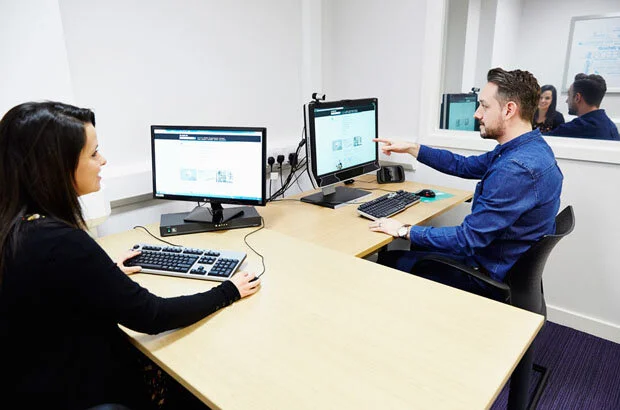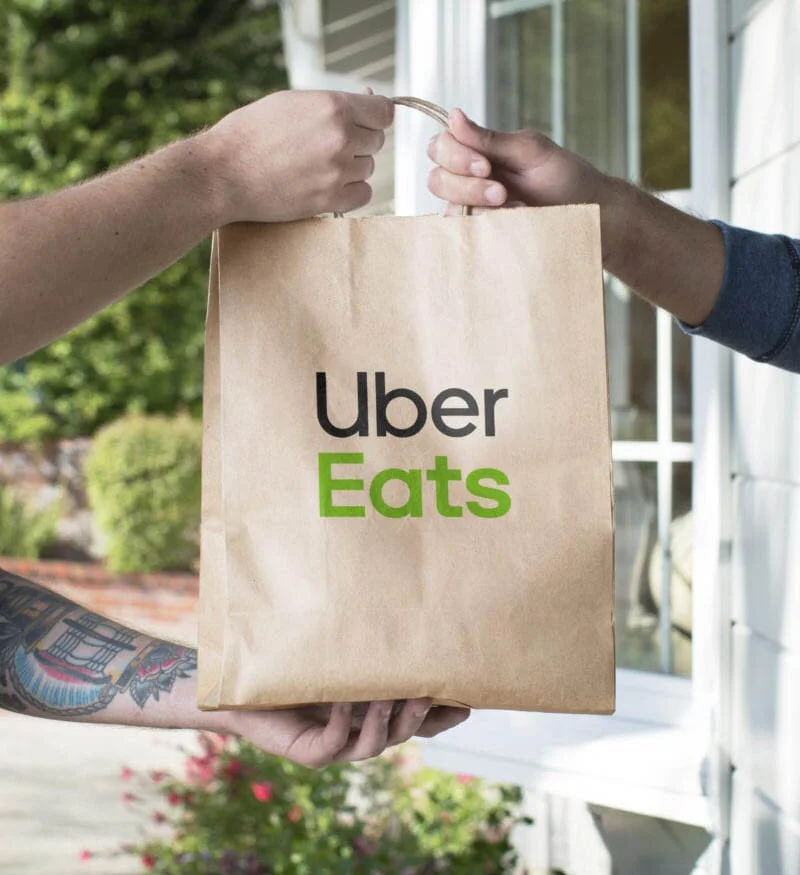Selected works > Usability Test
Usability Testing
Unsolicited data research for Uber Eats
UX Research | Usability Test Planning | Loop11Summary
A usability test was conducted on the website and mobile application, Uber Eats. Usability test planning serves as a blueprint for test and pre-test tasks. The goals of usability testing includes determining a baseline of user performance, creating user personas for our target user, determining a user testing environment, identifying tasks to be completed, establishing user performance measures, and addressing any potential design flaws regarding user efficiency, effectiveness, and satisfaction.
MY ROLEUX Researcher
TYPEAcademic
TIMELINE2 Weeks
TEAMOluwatoni Daramola, Lili Wang, and Alexa MacLean
Problem Space
Uber Eats website, will focus on the order & delivery feature, and limit in the Greater Toronto Area market.
User Goals
To browse and choose food they want to eat quickly.
To discover and get healthy food easily.
User Personas
Two user groups were identified as the target user persons for this usability test.
The first user group is the young adults, from 20-30. Mia is 26 years old and lives alone. She is very focused and busy with work and finds herself neglecting her health. She was to find healthy alternatives that are quick and convenient for her.
The second user group is people from 30-60 with families. Ken is married with two children. Both he and his wife work full time and find themselves ordering food for dinner about 2 -4 times a week. They want to prioritize their family’s health and find healthy alternatives but still have the convenience.
Research Objectives
Is the search function efficient for users to find what they want?
Ease of search for a healthy whole food option from a food outlet brand located within 10 km to the user?
Test Format & Environment
This test was hosted online through Loop11.
Equipment:
Each user will need a laptop with a camera, make sure the device is able to connect to the Internet and has no problem opening Loop11 Website.
Each user also needs to download Uber Eats on their phone before the test or make sure they can open Uber Eats' website.
Logistics:
Prepare electronic version consent forms.
Make sure the moderators are familiar with the test process and the tested product features.
Prepare the incentive gift cards.
Study Details
Test date: Friday, December 11th, 2020.
Number of users: 5 participants in total.
Duration of sessions: 30 minutes.
Incentive: All participants are offered a $20 gift card.
Study Location: Remote Testing.
Testing Schedule: 9:00-9:30, 10:00-10:30, 11:00-11:30, 12:00-12:30, and 1:00- 1:30.
Overall Criteria: All participants must:
At least 1-year of experience using the Web.
Order food in the last 6 months.
Be fluent in English.
NOT in the food industry.
Be between the ages of 20 and 60.
Recruitment Strategy
We will be recruiting our participants using social media platforms. These platforms will include; Instagram, Whatsapp, Facebook, etc. We will be advertising that we will be conducting a usability study and there will be an 20 dollar incentive for completing it. Once potential participants have offered to complete the test, we will reach out and ask the screener questions. Based on the answers to the screener questions we will be able to eliminate or accept the potential participants. We will select 5 participants and set up a meeting with them on Friday, December 11th to complete the usability test.
Screener Questions
Participant Demographics
Five participants were recruited to participant in the usability test. We ensured that both of our target user segments were included in the test . Therefore we included both males and females, as well as a variety of ages, ranging from 20 to 60.
Breakdown of Tasks
User Task 1:
Order one cup of Freshii Green Smoothie from your nearest Freshii store.
Go to Uber Eats on the main page.
Create an Uber Eats account or log in.
Find the search box.
Enter "Freshii".
Enter Freshii store.
Order a cup of Freshii Green Smoothie.
User Task 2:
Find the highest rating healthy restaurant near you (within a $4 delivery fee).
Go to Uber Eats on the main page.
Create an Uber Eats account or log in.
Find the "Healthy" icon.
Use the filter on the left side.
Let the delivery fee be less than $4.
Find the highest rate healthy restaurant near you.
Data Collection
After completing the Loop11 usability test we were able to collect the data to analyze any usability issues. As shown on the right, we created a pie chart showing the outcomes of both tasks.
Task 1: Order one cup of Freshii Green Smoothie from your nearest Freshii store.
Task 2: Find the highest rating healthy restaurant near you (within $4 delivery fee).
Closure Questions
To determine the efficiency, effectiveness, and satisfaction of the usability test we asked our participants a series of closure questions upon completion of the usability test.
The questions included:
How did you find the ease of use of task one?
Did you feel comfortable completing task one?
How did you find the ease of use of task two?
Did you feel comfortable completing task two?
Results
We tested 6 people in total, but there were 7 attempts.
One person attempted twice, he abandoned for the 1st time because he didn’t want to create an account. The second time, he finished the first task and didn’t complete the 2nd.
Another person didn’t complete all tasks because she ran out of time.
All other people completed all tasks.
Task 1 is both easy and comfortable for all the participants who completed the tasks.
Task 2 shows a problem: not all users’ homepage will have the “health” icon, so participants can only use the search function to complete the task.
Task 2 also shows the filter function works well.
Usability Problems
Visibility of System: On the mobile view, no healthy icon was found, the user had to run a search on the “healthy” tag.
User Control and Freedom: Users are unaware they can sort by ratings to easily find the top-rated restaurants.
Consistency and Standards: Functional inconsistencies in the mobile and web version. E.g. filter options on the web are not the same as the mobile version. Web-version does not include “sort by rating”.
The efficiency of Use: Healthy food options (and other niche food) should be called out more by having its dedicated page and not necessarily just a search results page.
Usability Solutions
In order to ensure consistency and standards, our first solution is to make the main functions of the mobile app and website’s interface consistent to reduce user learning costs. We would make sure that the filter options match on both the web and mobile versions. Also adding a “sort by rating” option on the web interface. This will prevent any confusion that the user might have when using either interface.
The second solution we recommend is to add "healthy food" and other niche food pages more dedicated, eg. add a recommendation section or discounted section. This would add to the efficiency of use for the user.













